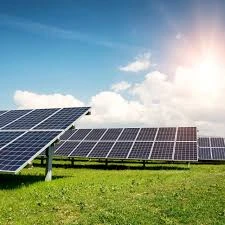solar power inverter
Understanding Solar Power Inverters A Key Component of Solar Energy Systems
The global push for renewable energy has propelled solar power into the forefront of sustainable energy solutions. As more homeowners and businesses look to harness the sun's energy, understanding the components of solar energy systems becomes crucial. One of the most critical parts of any solar power system is the solar power inverter. This component plays a vital role in converting the energy captured from sunlight into a usable form for our electrical needs. In this article, we’ll explore the function of solar power inverters, the different types available, and their importance in the solar energy ecosystem.
What is a Solar Power Inverter?
At its core, a solar power inverter is an electrical device that converts the direct current (DC) electricity generated by solar panels into alternating current (AC) electricity, which is what most home appliances and the electric grid use. Solar panels produce DC electricity, but the majority of household devices run on AC electricity. Thus, without an inverter, the energy generated by solar panels would be unusable.
The Types of Solar Power Inverters
There are several types of solar power inverters, each with its unique advantages and applications
1. String Inverters This is the most common type used in residential solar systems. String inverters are connected to a series, or string, of solar panels. While they are relatively affordable and easy to install, their main downside is that the performance of the entire string can be impacted by the least efficient panel. If one panel is shaded or malfunctioning, it can reduce the output of the entire string.
2. Microinverters Unlike string inverters, microinverters are installed on each solar panel, enabling them to operate independently. This means that if one panel experiences issues, the rest can continue to operate at optimal levels. Microinverters often deliver better overall system performance, especially in installations that may have shading or varying orientations. However, their initial cost can be higher.
3. Power Optimizers Similar to microinverters, power optimizers are installed on each panel but still rely on a central inverter to convert the DC to AC electricity. They help maximize energy production at the panel level while allowing for centralized control and monitoring. This option blends some of the advantages of both string inverters and microinverters.
solar power inverter

4. Hybrid Inverters As energy storage systems, like batteries, become more popular, hybrid inverters are gaining traction. They can manage energy production from solar panels, use that energy to charge batteries, and supply power to the home or grid. This type of inverter can optimize energy usage and enhance the overall efficiency of a solar energy system.
The Importance of Solar Power Inverters
The importance of solar inverters cannot be overstated. They are essential to ensuring that solar energy is harnessed efficiently and effectively. Here are several reasons why solar power inverters are vital
- Energy Conversion Inverters are the bridge between solar energy generation and power consumption. They ensure that electricity generated from solar panels is converted to a usable form for rounding out the home’s energy supply.
- Monitoring and Optimization Many modern inverters come equipped with advanced monitoring capabilities that allow homeowners to track the performance of their solar systems. This data can provide valuable insights into energy production patterns and make it easier to identify issues that may need addressing.
- Safety Inverters also play a crucial safety role. They can detect issues such as ground faults or overloads, disconnecting solar panels from the grid in case of electrical problems. This feature is vital for preventing accidents and ensuring a safe installation.
- Grid Interaction For systems connected to the grid, inverters facilitate the smooth transfer of energy back to the grid when excess solar energy is generated. This allows homeowners to earn credits for feeding energy back into the grid, further enhancing the economic viability of solar installations.
Conclusion
Solar power inverters are a fundamental component of any solar energy system, ensuring the efficient conversion and usage of the electricity generated by solar panels. With different types of inverters available, homeowners can choose a solution that best fits their needs and installation conditions. As the adoption of solar energy continues to grow, understanding the role of inverters will help individuals make informed decisions about their energy systems, ultimately contributing to a more sustainable future. Investing in a quality inverter is investing in the longevity and performance of a solar power system, underscoring the importance of this often-overlooked component in harnessing renewable energy.
-
String Solar Inverter: The High-Efficiency Solution for Smart Solar EnergyNewsJul.14,2025
-
Revolutionizing Rooftop Energy with the Power of the Micro Solar InverterNewsJul.14,2025
-
Power Independence with Smart Off Grid Solar Inverter SolutionsNewsJul.14,2025
-
On Grid Solar Inverter: Powering the Future with Smart Grid IntegrationNewsJul.14,2025
-
Monocrystalline Solar Panels: High-Efficiency Power for the Future of Clean EnergyNewsJul.14,2025
-
Bifacial Solar Panel: A Smarter Investment for Next-Generation Energy SystemsNewsJul.14,2025







